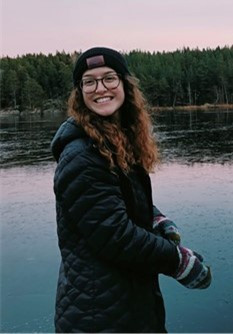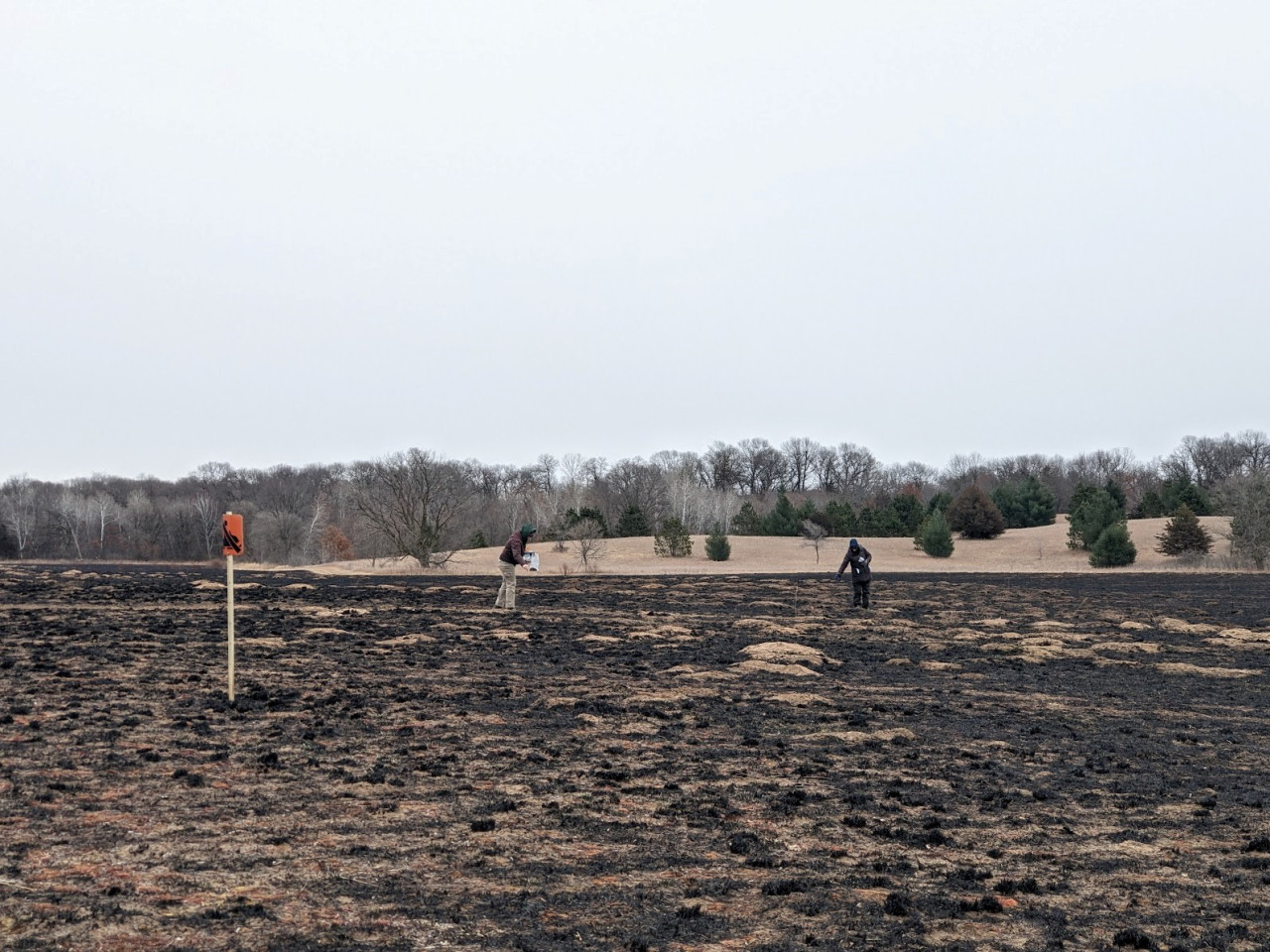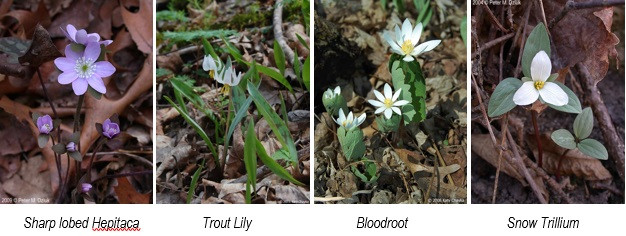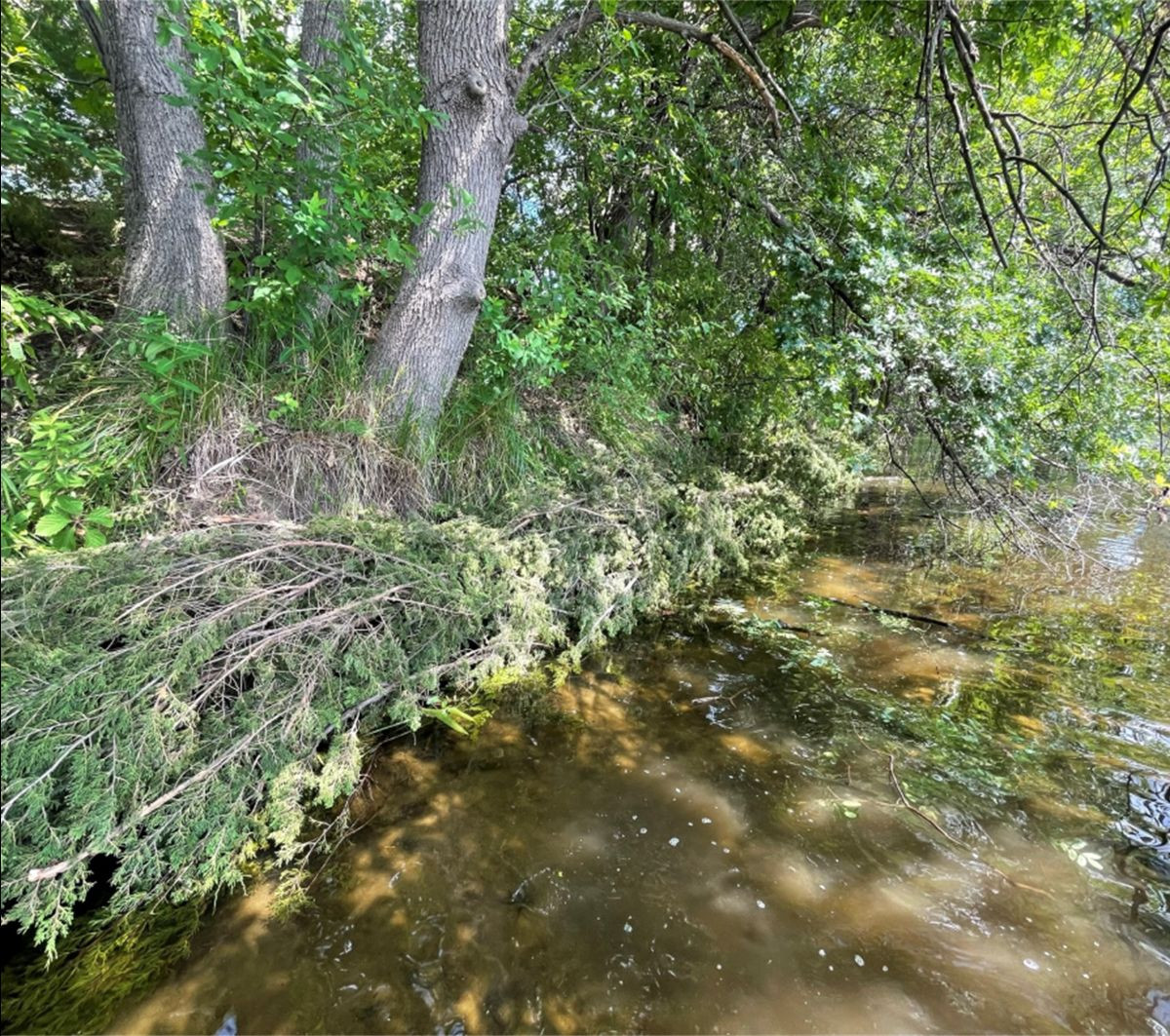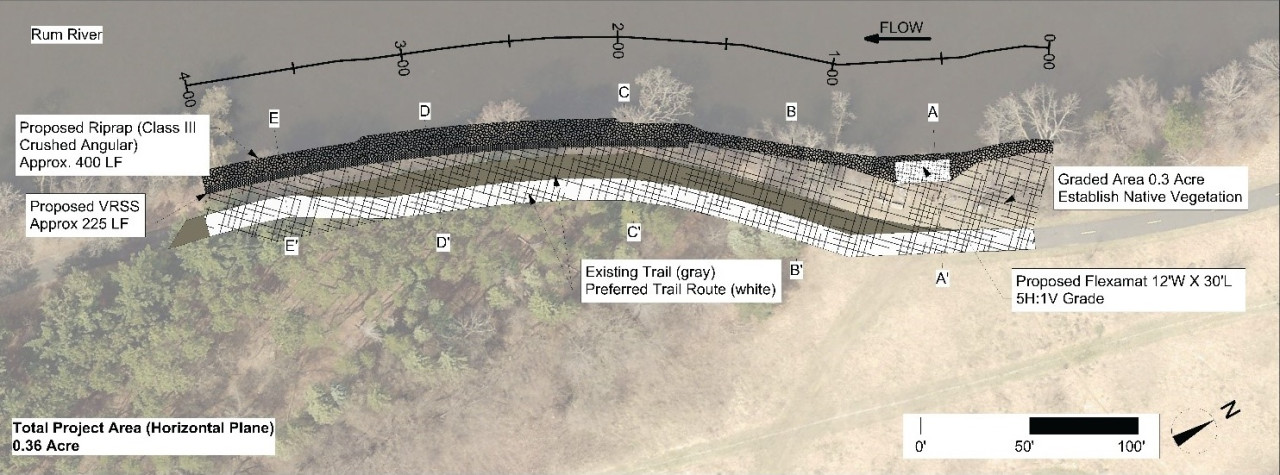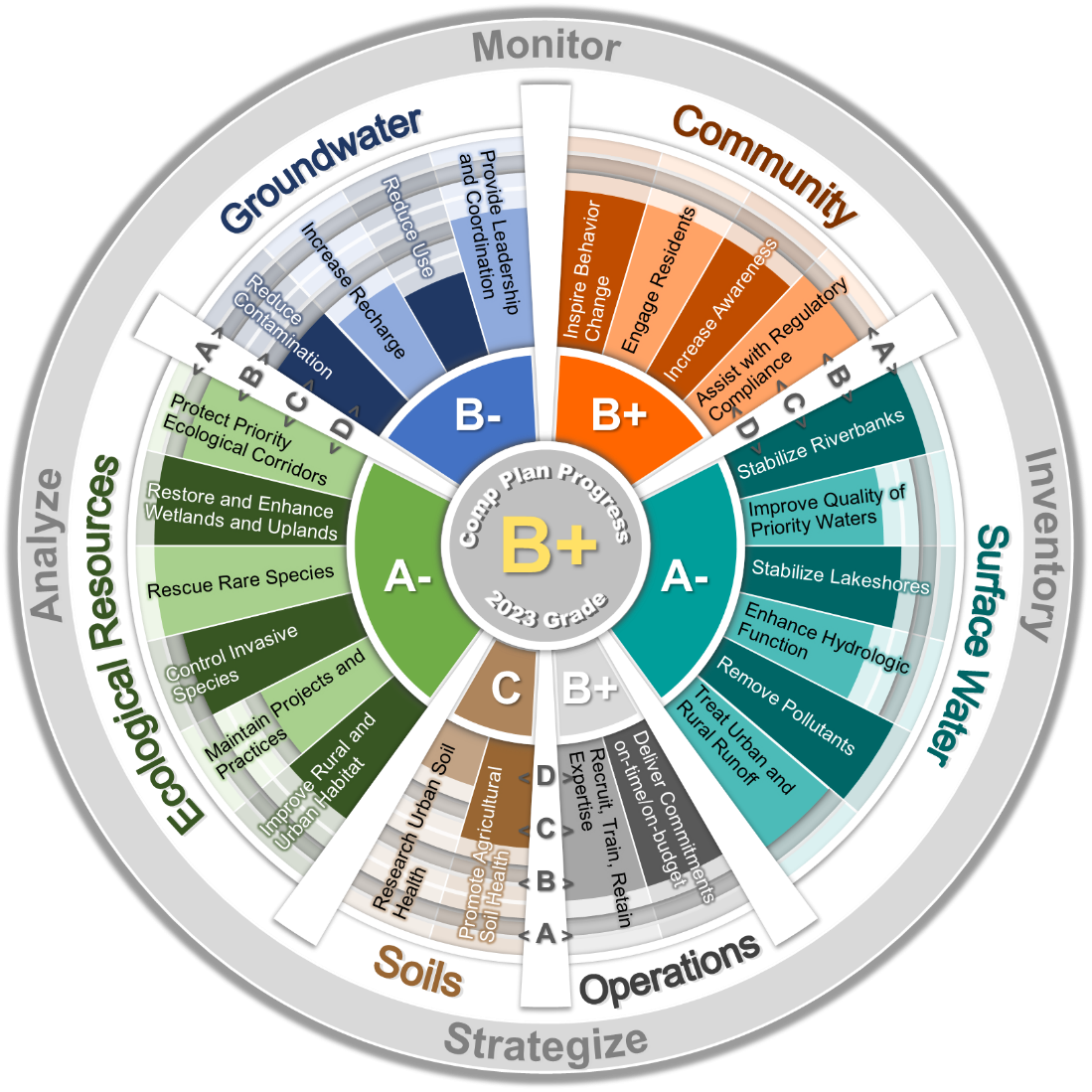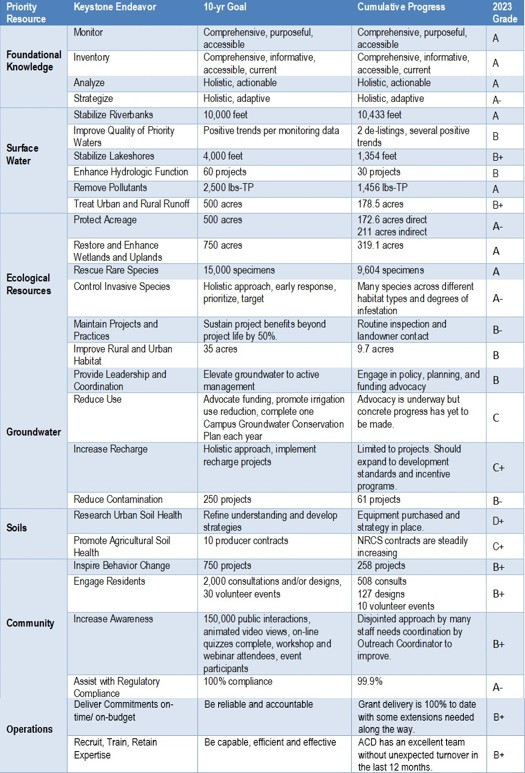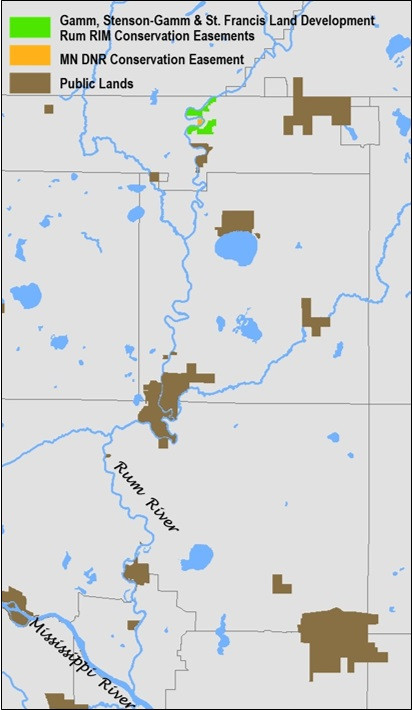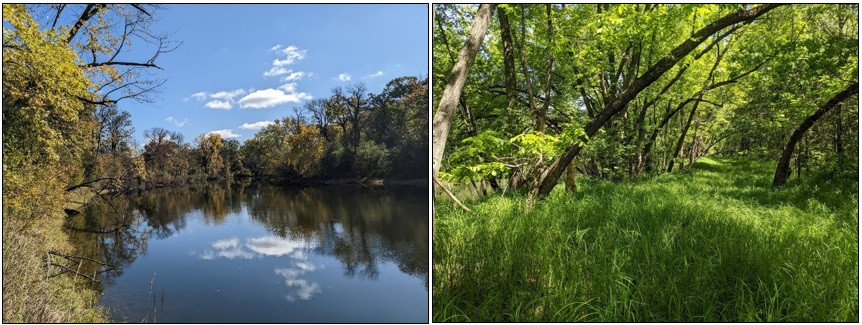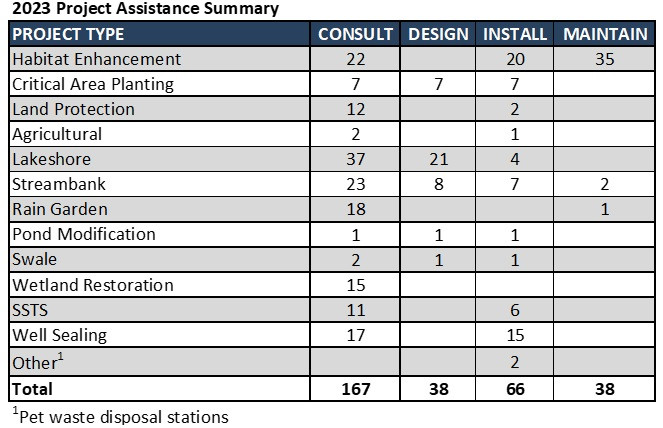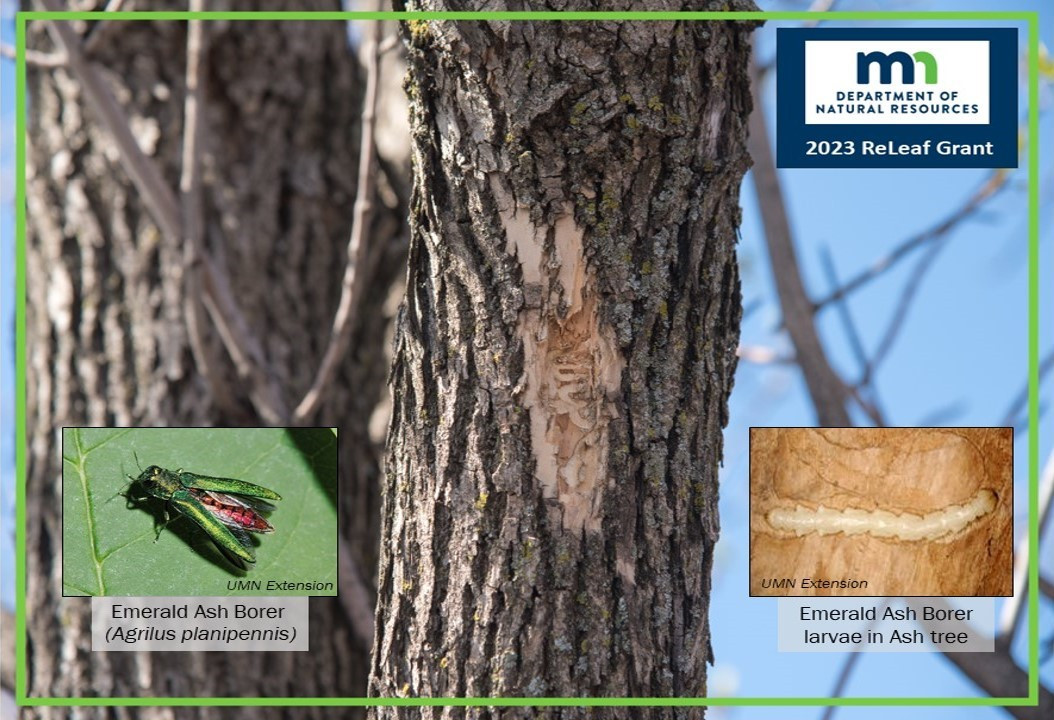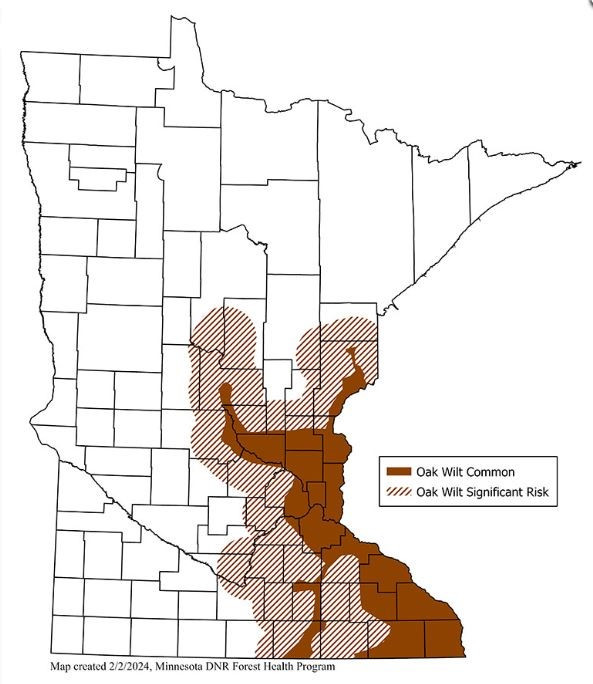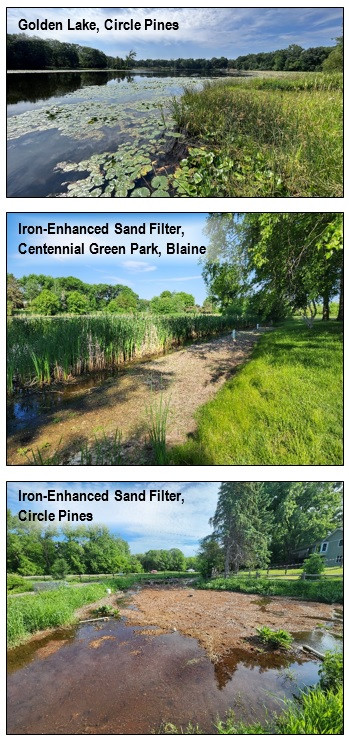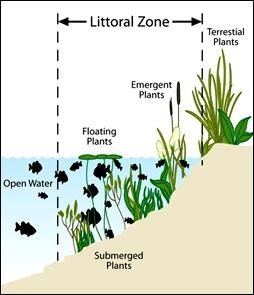Aviva joined the District in April of 2024 as the Outreach Coordinator. She holds a Bachelor's degree in Environmental Studies and Geography from Gustavus Adolphus College in St. Peter, MN. Aviva supports communication and outreach efforts to promote District programs and activities while fostering partnerships, collaboration, and engagement across the District. Aviva can be reached at
Adapted from: Matthew Russell is a Minnesota Extension specialist in forest resources.
Emerald ash borer (EAB) has left a wake of dead ash trees throughout 4.3 million acres across the state. Minnesota forests are home to three native ash species. Unfortunately, all of these ash trees are susceptible to EAB. Here are seven native tree species that you can research for replacing your ash. Each species has its own unique characteristics and are adapted to different environmental conditions.
American Elm (disease-resistant elm varieties) Like ash, elms can tolerate wet conditions. Elms are slightly different in that they require full sun for the best growth.
Quaking Aspen Aspen sprouts vigorously, a form of reproduction without using seeds. It is often one of the first species to come back to an area after a timber harvest or fire.
Northern White Cedar In its natural habitat, it can form dense stands and survives well in moist soils. Northern white cedar trees will attract wildlife. Cedar trees are a favorite of white-tailed deer.
Swamp Oak This species can tolerate heavy and wet soil, which makes it a good replacement for black ash. While native only to southeastern Minnesota, swamp white oak is known as a climate change "winner" and has been planted with success in research trials in northern Minnesota.
Hackberry It can survive heat and drought or wind and ice, making it suitable for Minnesota's climate. In its native habitat it can be found in floodplains and along rivers in the central and southern portions of the state.
Silver and Red Maple are common in southern Minnesota and grow into the north-central part of the state, typically along rivers. These maples are widely planted as a shade or ornamental trees. Silver maples leaves are are green on top and "silvery" on bottom and red maple leaves turn a brilliant red in the fall, giving the trees their names.
River Birch can thrive in floodplains and near stream banks. River birch can be a single or multi-stemmed tree, making it a great tree to consider for the landscape around your home. Its copper-colored bark makes it stand out from other common trees.
Diversifying the types of species you plant in your yard or woodland gives you reassurance that your landscape can survive future insect and disease outbreaks. For more options, Extension's replacement trees for ash page can help you figure out which trees will grow well in your plant community. Consult an arborist or forester for more advice to make sure you plant the right trees in the right spot.
For more information contact Becky Wozney, Wetland Specialist, at
ACD was recently awarded National Fish and Wildlife Foundation Monarch Butterfly and Pollinators Conservation Funds to increase habitat for the monarch butterfly and other pollinators. ACD is collaborating with Sherburne County Parks and Great River Greening to restore and enhance habitat and create pollinator corridors within the Anoka Sand Plain region. This funding will help support and expand state programs such as the Anoka Sand Plain Partnership and the BWSR Habitat Enhancement Landscape Program.
Sherburne County Parks will coordinate restoration and enhancement activities at Bdé Heḣáka, Omashkooz Zaaga'igaans Regional Park, a new park in coordination with Tribal Historic Preservation Officers from the Upper and Lower Sioux Community and Mille Lacs Band of Ojibwe to restore land through traditional cultural methods. Great River Greening will coordinate projects to enhance large habitat corridors in Sterns, Sherburne, Chisago, Wright, Anoka, Benton and Morrison counties. ACD will coordinate projects within Anoka County.
Unused lots, agriculture fields that are out of production and turf will be restored to create new habitat by planting native milkweed and wildflowers. Degraded lands that have little to no milkweed and forbs will be enhanced by controlling invasive species and conducting prescribed burns. ACD will be hosting events to plant, collect seed, and participate in a national Integrated Monarch Monitoring Program. Details on volunteer opportunities are coming soon! For more information contact Carrie Taylor, Restoration Ecologist, at
Spring is upon us! Some of the first plants to emerge are woodland wildflowers known as spring ephemerals. These short lived gems take advantage of the spring sunlight by completing their life cycles before the forest canopy leafs out for the season. In addition to their beauty, spring ephemerals provide critical resources for pollinators as they emerge in the early spring. Common ephemerals include Hepatica, Trout Lily, Bloodroot, and Trilliums.
Among the first plants to green up in spring, garlic mustard outcompetes native spring ephemeral wildflowers, diminishing early season resources for pollinators and degrading forest health. Garlic mustard has a two year (or biennial) life cycle, producing a short basal rosette without flowers in the first year and a tall "bolting" stalk in the second year. It's important to pull these weeds before they produce seed in the second year. Treat garlic mustard by pulling the whole plant and the roots by hand. If you pull garlic mustard before it flowers, leave the material on the ground to decompose. If you pull it after flowering or seed production, bag it and dispose of it properly so that no seeds are spread.
Learn tricks to help identify and treat garlic mustard from the MN Dept of Ag and Friends of the Mississippi River. Help us protect the beautiful and diverse forests of Anoka County by pulling garlic mustard! For more information contact Logan Olson, Restoration Technician, at
What is a Cedar Tree Revetment?
Cedar tree revetments use Eastern red cedar trees to serve as soft, natural armor, providing protection along eroding riverbanks. This protection decreases erosion and allows silt and sand to be deposited overtime. The deposited material forms a bed in which the seeds of riverbank plants such as sedges can grow. By the time the trees have decayed, the bank should be stabilized by the root systems of new plant growth and accumulated sediment. Revetments are ideal for riverbanks experiencing mild to moderate erosion. For riverbanks more than 5 ft. tall or areas with high water velocity, a revetment practice may be inadequate to properly address the issue.
Why Install a Cedar Tree Revetment?
Cedar tree revetments are a low cost, environmentally friendly option to address eroding streambanks. Revetments will slow or stop erosion during the project's lifespan and reduce the likelihood of a much larger and more expensive corrective project in the future. Riverbank erosion contributes sediment and other pollutants into waterways, reduces riparian habitat, and results in property loss. Stabilizing your eroding riverbank will provide water quality benefits to the Rum River as well as protect your property.
This program is being funded through a Conservation Partners Legacy grant and there is currently funding available to eligible properties. If you live along the Rum River in Anoka County and are interested in learning more about installing a cedar revetment on your property, contact Kris Larson, Water Resource Specialist, at
Dreaming of warmer weather and gardening season? Applications are now open for Fall 2024 individual Lawns to Legumes grants! Minnesota residents are eligible to apply for $400 reimbursement grants for creating native pollinator habitat on their properties. Projects can take the form of small pocket plantings, larger pollinator meadows, or pollinator friendly lawns. Grant recipients are selected by a lottery system. The application closes on May 15th. Check out the MN Lawns to Legumes page for a plethora of resources on pollinator garden design, selecting native plant species, and maintaining pollinator habitat.
Note: Individual Lawns to Legumes grants are distributed at the state level, not by ACD. You can find contact information for assistance with these programs at the links above. For more information contact Logan Olson, Restoration Technician, at
Erosion along 400-feet of Rum riverbank at a City of Anoka riverfront easement is causing sediment loading and tree loss, and has washed out a highly used walking trail. The design features three primary protection measures detailed below.
1. The toe of the bank, mostly below the water line, will be armored with a rock. The rock will be installed up to the two-year flood elevation (50% of years it will be completely covered). This lowers the top of the rock by two feet compared to the standard approach. This allows habitat friendly approaches above.
2. Above the rock, the bank will be seeded with a native plants, and staked with willow and dogwood. Native vegetation provides habitat benefit and root structure to anchor the soil in place. We may grade the bank back to a flatter, more stable slope. Alternatively, we may use a series of wrapped soil lifts called a "vegetated reinforced soil system" to maintain a steeper slope that is still stable and vegetated. The final decision will be based on bids received.
3. There is a heavily used informal access point at the upstream end of this site. This area gets beat down by heavy foot traffic. We will use one roll of articulated concrete block to offer stable footing and reduce the erosion caused by that foot traffic.
For more information contact Jared Wagner, Water Resource Specialist, at
ACD staff recently reflected on 2023 to take stock in how well we've been doing to implement our 10-year Natural Resources Stewardship Plan. We looked at 24 Keystone Endeavors across four priority natural resources, our human resource (community), and internal operations. We also considered foundational knowledge gained through monitoring, inventory, analysis and planning. Grades reflect the following:
A - Ahead of plan
B - On track
C - Progressing slower than anticipated
D - No progress
F - Neglected
10-year Goals
A prerequisite to gauge success is to define our 10-year expectations and aspirations for each keystone endeavor based on our current and anticipated staff and financial capacity. Some goals are easily quantified while others are more subjective.
For more information contact Chris Lord, District Manager, at
ACD has collaborated with BWSR's RIM program to establish conservation easements to permanently protect, restore, and manage natural resources on private lands. Land protection has many benefits including protecting water quality, habitat, creating conservation corridors, and supporting climate resiliency.
In 2023, two new conservation easements were established along the Rum River. They are adjacent to a conservation easement that was established in 2022 through the Rum RIM program and across the river from a DNR Conservation Easement. These conservation easements create a block of protected land totalling 183.5 acres along 10,960 feet of shoreline. The Gamm, Stenson-Gamm, St. Francis Land Development, and MN DNR Conservation Easement create an additional habitat core with functioning ecosystems and enhance habitat in the Rum River corridor.
For more information contact Carrie Taylor, Restoration Ecologist, at
ACD staff provide technical assistance for a wide-variety of projects each year. Many of the requests for assistance come directly from landowners interested in improving natural resources on their individual properties. Technical assistance is also provided for projects in collaboration with county, city, and watershed entity partners. The table below summarizes 2023 technical assistance provided by ACD staff.
Assistance usually begins with a site consultation. Consultations typically include a conversation with the landowner, desktop review of the site using GIS mapping software and available data sets, and a site visit to discuss options. If the landowner is interested in pursuing a project, ACD can provide design and installation oversight services. Maintenance guidance is also provided for previously installed projects.
For more information contact Mitch Haustein, Stormwater & Shoreline Specialist, at
Emerald Ash Borer (EAB) is an invasive insect that has killed millions of Ash trees throughout North America. Since 2009, EAB has been detected in 46 counties in Minnesota, including Anoka County. MN is home to over 1 billion Ash trees, all of which are vulnerable to EAB infection.
Trees affected by EAB dry out and rot quickly, creating public safety hazards. If allowed to decay, these conditions can cause trees to become dangerous to manage. Removing ash trees in high-traffic areas including along public trails and neighborhood streets is a top safety priority. Learn more about Emerald Ash Borer on the ACD Website.
Oak Wilt is a fungal disease that affects all species of oak trees. It is spread by sap beetles and through the tree's root systems. The disease affects Oak species differently; it can kill Red Oak trees in 2-3 months whereas White Oaks can live up to 20 years after becoming infested. It's important to know the signs of Oak Wilt to prevent further forest damage. Learn more about Oak Wilt on the ACD Website.
Help Stop the Spread!
Avoid cutting and pruning Ash trees from May 1 - September 31 as EAB insects are most active during this time. Do not transport firewood offsite from where it was collected. The Twin Cities metro and much of Eastern, MN is within an EAB quarantine zone and transporting firewood out of these areas risks spreading EAB.
Avoid cutting and pruning Oak trees from April 1 through July 31 as sap beetles are most active during this time. Treat spring and summer tree wounds with a water based paint or pruning wound sealer to avoid attracting sap beetles. Do not transport firewood off the site where it was collected. The Twin Cities metro and much of east central Minnesota is infested with Oak Wilt. Transporting firewood out of this area risks spreading this forest disease.
The unseasonably warm winter extends the 'don't prune' window and it probably starts in March for 2024.
ACD was a recipient of the MN Department of Natural Resources ReLeaf Community Forestry Grant to help efforts to manage Oak Wilt and EAB in Anoka County. A variety of tree species will replace those affected by Oak Wilt in the Anoka Nature Preserve (ANP), including treating Common buckthorn in 2024-25 to free up space for new trees to be planted in 2026. Ash trees at Kings Island in the City of Anoka will be removed in early 2024 and new trees will be planted in 2025. Planting at both of these sites will be completed with the help of volunteers. If you have interest in helping out as a volunteer, sign up here!
For more information contact Logan Olson, Restoration Technician, at
The proposed removal of Golden Lake from Minnesota's impaired waters list was highlighted in a recent Board of Water and Soil Resources (BWSR) article that underscores the importance of Clean Water Funds (CWF) for measurable water quality improvement. ACD secured two CWF grants for iron-enhanced sand filters (IESF) to reduce phosphorus reaching Golden Lake, located in Circle Pines, MN. Iron-filings mixed throughout the sand, capture phosphorus from stormwater passing through the filters. One IESF was installed in Centennial Green Park (2015) in the City of Blaine, and the other was installed in the City of Circle Pines (2019). Both projects were identified as cost-effective phosphorus reduction options in a Golden Lake stormwater retrofit analysis completed by ACD.
The proposed delisting of Golden Lake is a testament to the hard work and collaboration by many, including ACD, the City of Blaine, the City of Circle Pines, and the Rice Creek Watershed District. Mitch Haustein, ACD's Stormwater and Shoreland Specialist, assisted with the projects and was interviewed for the article. Click here to read the full article from BWSR that also includes brief stories about proposed delistings for 6 other Twin Cities area lakes, 1 Wright County river reach, and 1 Winona County stream segment.
For more information contact Mitch Haustein, Stormwater & Shoreline Specialist, at
Emergent aquatic plants such as cattails, bulrushes, and sedges grow within the shallow margins, or "littoral zone", of most lakes in Minnesota. These plants improve water clarity as their roots stabilize the lakebed and take in nutrients. Their stems and leaves provide habitat both above and below the water, and they protect shorelines against the forces of wave action. Emergent plants often grow alongside other aquatic vegetation, collectively creating diverse habitat essential to lake health.
Any Destruction of Emergent Vegetation Requires a Permit in Minnesota - Lakeshore owners often wish to remove emergent vegetation to improve their water access. Given the important role emergent vegetation plays in lakes, any removal of aquatic emergent plants requires a permit from the Department of Natural Resources. The permit process connects landowners with professionals to ensure that the extent of vegetation removal (and methods used to achieve it) minimize impacts to the lake. Learn more about aquatic plant regulations HERE.
When Does Emergent Vegetation Become Problematic? - Non-native species such as narrow-leaf and hybrid cattails often grow in dense monocultures that can outcompete native species. Habitat quality and recreation can be quickly reduced as these species spread across large areas of shallow water, but management efforts to remove them are often challenging and costly. When occurring in small clusters, these plants can still provide water quality benefits along shorelines where native emergent plants are absent. In either circumstance, any removal of emergent plants - even if non-native - requires a permit.
Expectations for Living on a Lake - Aquatic vegetation is a natural and important part of lake and wetland systems. The abundance and types of plants present are largely driven by water depth and clarity. Many lakes in the north metro are shallow (less than 15 ft. deep) or are technically open-water wetlands. When paired with good water quality allowing sunlight to reach the bottom, these lakes usually contain abundant vegetation throughout. The alternative is poor water quality from disturbances such as excessive nutrients, which can reduce aquatic vegetation and the fish and wildlife that depend on it. Learn more about shallow lake vegetation from this StoryMap produced by the Rice Creek Watershed District: Aquatic Plants: Guardians of our Shallow Lakes.
For more information contact Breanna Keith, Water Resource Specialist, at

